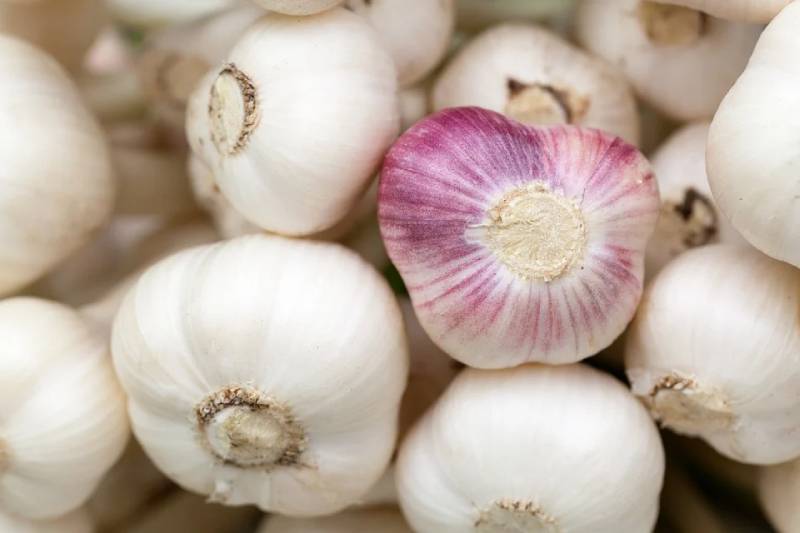A Step-by-Step Guide
Introduction to Garlic Export to India
India ranks among the world’s largest consumers of garlic. This aromatic ingredient is essential in Indian cuisine and widely used in traditional medicine. Although India produces a large quantity of garlic, demand continues to rise for premium varieties not available locally. As a result, international suppliers have an excellent opportunity to enter this fast-growing market. If you’re planning to export garlic to India, this step-by-step guide will help you understand the necessary regulations, logistics, and documentation to ensure a smooth process.


Why Export Garlic to India?
Garlic plays a vital role in Indian cooking and Ayurveda. While India grows garlic across multiple states, local supply doesn’t always meet national demand. Therefore, Indian importers look for high-quality garlic with features like larger bulbs, longer shelf life, and unique varieties such as black garlic.
Moreover, India’s expanding food processing industry further increases the demand for garlic imports.
Key Requirements for Exporting Garlic to India
1. Ensure Your Indian Buyer Has an IEC
The Indian importer must have an Import-Export Code (IEC), issued by the Directorate General of Foreign Trade (DGFT). Without this code, they legally cannot import goods. If necessary, help them through the registration process to avoid delays and ensure readiness for customs clearance.
2. Secure a Phytosanitary Certificate
Your garlic must pass plant health inspection in the country of origin. The national agricultural authority issues a phytosanitary certificate, confirming that the garlic is free from pests and diseases. Because India enforces strict plant quarantine rules, this certificate is a non-negotiable requirement for customs approval.
3. Meet FSSAI Regulations
The Food Safety and Standards Authority of India (FSSAI) regulates all food imports. To comply, your garlic must follow food safety, labeling, and packaging standards. In addition, your Indian partner must submit supporting documents to FSSAI before the shipment arrives.
4. Understand Indian Customs Duties and Clearance
Once the garlic reaches India, customs procedures begin. The importer must file a Bill of Entry to declare shipment details such as value, weight, and origin. In most cases, garlic shipments are subject to customs duties and Goods and Services Tax (GST). Therefore, reviewing all documentation with your buyer before shipping can help avoid unnecessary delays.
Step-by-Step Process to Export Garlic to India
Step 1: Study the Market and Identify Buyers
To begin, research garlic consumption trends and preferences in India. Popular varieties include softneck, hardneck, and black garlic. After understanding the demand, find reliable importers who know local distribution and regulations.
You can discover potential buyers through trade fairs, B2B platforms, and government export agencies.
Step 2: Prepare Garlic for Export
Once you’ve confirmed an order, sort, clean, and grade your garlic according to the buyer’s specifications. Proper post-harvest handling is critical, as it reduces spoilage. Furthermore, use ventilated, moisture-resistant packaging to protect the garlic during transit.
Step 3: Choose the Right Shipping Method
Garlic is durable, but conditions during shipping can still impact its quality. For most exports, sea freight offers cost efficiency. However, air freight may suit urgent or small-volume orders. In either case, select a logistics partner experienced with perishable goods. Also, ensure cold storage and proper ventilation throughout the journey.
Step 4: Prepare and Submit All Documentation
Before shipping, compile the necessary export and import documents. These typically include:
Commercial Invoice: Lists the quantity, unit price, and product description
Packing List: Shows packaging details and net/gross weight
Phytosanitary Certificate: Confirms compliance with plant health standards
Certificate of Origin: Certifies the garlic’s country of origin
Bill of Lading or Airway Bill: Details logistics and route
By organizing these documents ahead of time, you reduce the risk of customs delays.
Step 5: Complete Customs Clearance in India
After arrival, Indian customs officers inspect the shipment. The importer files the Bill of Entry and pays applicable duties. Provided that all documents are correct, the shipment is cleared for distribution. However, incorrect or missing information may result in detainment or fines. Therefore, stay in close contact with your importer to resolve issues quickly.
Tips for Successfully Exporting Garlic to India
Maintain High Standards: Quality garlic earns repeat buyers. Use proper grading, cleaning, and storage techniques to preserve freshness and visual appeal.
Choose a Reliable Logistics Partner: Since delays and mishandling can harm product quality, select a logistics company with experience in perishable food transport.
Stay Updated on Import Laws: Because Indian food import regulations evolve, regularly check updates from DGFT, FSSAI, and Customs.
Communicate with Your Buyer: Good coordination helps with documentation, compliance, and timely delivery.
Build Flexibility into Your Schedule: Customs clearance and port delays are common. So, plan buffer time for shipments, especially during busy seasons.
everything about garlic medical information or benefits +garlic



